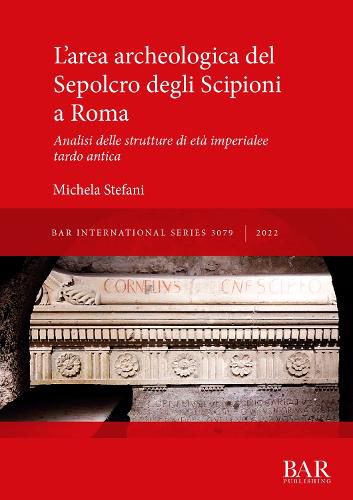Readings Newsletter
Become a Readings Member to make your shopping experience even easier.
Sign in or sign up for free!
You’re not far away from qualifying for FREE standard shipping within Australia
You’ve qualified for FREE standard shipping within Australia
The cart is loading…






This title is printed to order. This book may have been self-published. If so, we cannot guarantee the quality of the content. In the main most books will have gone through the editing process however some may not. We therefore suggest that you be aware of this before ordering this book. If in doubt check either the author or publisher’s details as we are unable to accept any returns unless they are faulty. Please contact us if you have any questions.
Il Sepolcro degli Scipioni, situato sulla Via Appia fuori Porta Capena, si configura come un vero e proprio palinsesto di epoche storiche. Oltre al celebre ipogeo infatti numerose altre strutture funerarie furono progressivamente costruite nel sito, come due colombari, due recinti funerari, una tomba a tempietto e un edificio funerario con piccola catacomba annessa, alcuni edifici presumibilmente residenziali, e una struttura forse interpretabile come un impianto produttivo/artigianale. La presente monografia si focalizza sull'analisi storico-archeologica degli edifici di eta imperiale e tardo antica, condotta attraverso l'analisi tipologica delle tecniche costruttive, della stratigrafia delle cortine e lo studio funzionale degli edifici. Cio ha permesso di ricostruire l'evoluzione degli insediamenti del sito e del tratto urbano della via Appia, incluso nell'urbs con al costruzione delle Mura Aureliane, offrendo una visione d'insieme sul progressivo cambiamento delle dinamiche di sfruttamento e occupazione di un territorio
ibrido di confine dal periodo imperiale alla tarda antichita.
The Tomb of the Scipios constitutes a palimpsest of historical periods. Besides the famous hypogeum, other funerary structures were progressively built on the site, such as two columbaria, two funerary enclosures, a temple tomb and a funerary building with a small catacomb, some residential buildings, and a structure interpreted as a production plant. This monograph focuses on the historical-archaeological analysis of the imperial and late antique buildings, conducted through the typological analysis of construction techniques, the stratigraphy of the curtain wall and the functional study of the buildings.
$9.00 standard shipping within Australia
FREE standard shipping within Australia for orders over $100.00
Express & International shipping calculated at checkout
This title is printed to order. This book may have been self-published. If so, we cannot guarantee the quality of the content. In the main most books will have gone through the editing process however some may not. We therefore suggest that you be aware of this before ordering this book. If in doubt check either the author or publisher’s details as we are unable to accept any returns unless they are faulty. Please contact us if you have any questions.
Il Sepolcro degli Scipioni, situato sulla Via Appia fuori Porta Capena, si configura come un vero e proprio palinsesto di epoche storiche. Oltre al celebre ipogeo infatti numerose altre strutture funerarie furono progressivamente costruite nel sito, come due colombari, due recinti funerari, una tomba a tempietto e un edificio funerario con piccola catacomba annessa, alcuni edifici presumibilmente residenziali, e una struttura forse interpretabile come un impianto produttivo/artigianale. La presente monografia si focalizza sull'analisi storico-archeologica degli edifici di eta imperiale e tardo antica, condotta attraverso l'analisi tipologica delle tecniche costruttive, della stratigrafia delle cortine e lo studio funzionale degli edifici. Cio ha permesso di ricostruire l'evoluzione degli insediamenti del sito e del tratto urbano della via Appia, incluso nell'urbs con al costruzione delle Mura Aureliane, offrendo una visione d'insieme sul progressivo cambiamento delle dinamiche di sfruttamento e occupazione di un territorio
ibrido di confine dal periodo imperiale alla tarda antichita.
The Tomb of the Scipios constitutes a palimpsest of historical periods. Besides the famous hypogeum, other funerary structures were progressively built on the site, such as two columbaria, two funerary enclosures, a temple tomb and a funerary building with a small catacomb, some residential buildings, and a structure interpreted as a production plant. This monograph focuses on the historical-archaeological analysis of the imperial and late antique buildings, conducted through the typological analysis of construction techniques, the stratigraphy of the curtain wall and the functional study of the buildings.